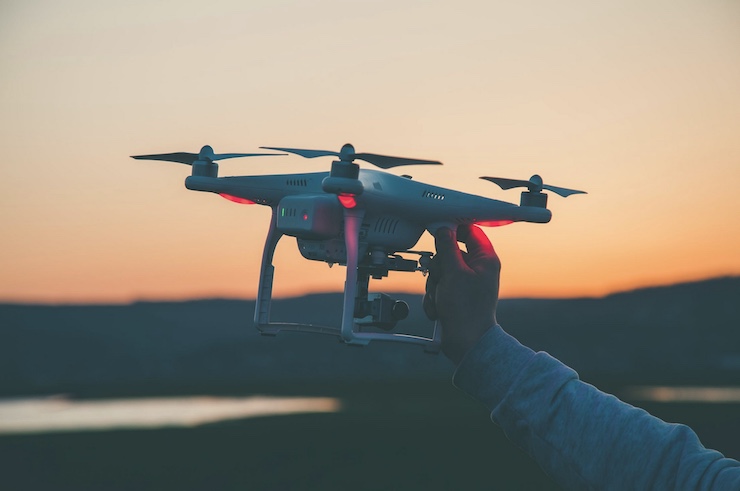Drones Played a Huge Role In our Economy During Covid-19

When quarantines began taking effect to curb the spread of COVID-19, thousands of businesses suffered. Without in-person customers and employees, many businesses were forced to close. While medical experts have yet to determine the long term health effects of COVID-19, the impact of the pandemic on the economy has been pretty clear. And while many markets failed to meet their goals, there was one industry that seemed to have had an upsurge because of the pandemic. The drone industry, an already rapidly expanding field, saw an even larger growth rate because of the constraints of COVID-19.
Perhaps the most impacted drone sector was that of logistics. In December of 2013, Amazon founder and CEO Jeff Bezos announced that Amazon customers could anticipate having their packages delivered by drones in the near future. With that pronouncement, the race from conceptual to realistic drone delivery systems was on. Before the pandemic hit, there were several companies throughout the world that had begun trial drone delivery systems. Most notably Zipline’s medical delivery drones in Africa, Wing’s small personal packages trials in Australia and Europe, and Matternet’s drone collaboration at the North Carolina WakeMed hospital campus. These logistical drone delivery trials laid the framework of how drones could be safely and efficiently used to transport parcels.
However, progressing drone deliveries into larger markets was difficult as safety regulations by the Federal Aviation Administration were still being created. Being able to receive medications or a coffee from a drone sounds like a wonderful idea, but only if it can be guaranteed to be safe. With the social distancing and quarantine requirements of COVID-19, the need for reliable logistical drone delivery programs was made abundantly clear. People living in remote regions needed access to medical supplies and personal protection equipment. People needed to be able to have access to necessities like toilet paper, bread, and milk through contactless delivery. Drones became the solution to this problem.
Soon, drones were delivering things beyond emergency supplies. Since people still couldn’t go to their favorite restaurants or shops, they began using drones to stay connected to these places. Libraries, grocery stores, restaurants, mom and pop shops, even the Girl Scouts were able to continue serving their customers by using drones as socially distanced delivery methods. Once COVID-19 vaccines became available, drones were once again saving the day. Drones have delivered these vital vaccines all around the world, to remote locations and populous communities, helping to greatly curb the spread of the virus.
But logistics is not the only market in which drones excelled over the year. Drones have kept people in many industries employed under COVID-19 conditions. With drones, utility companies have continued inspections to keep power grids, sewer systems, roadways, and much more running smoothly. Emergency and police departments have used drones to safely carry out day to day missions. Agriculturists use drones to maintain the health of their crops and livestock. Time sensitive scientific research programs did not have to be put on hold as drones allowed these programs to continue. Even schools were able to engage students in lessons, virtually and socially distanced, with the help of drones. For a long time, one of the main benefits people noticed about drones is the fact that they can easily get to places that humans can’t. While that still holds, what has become apparent throughout the pandemic is that drones have made it possible for people to stay connected, get what they need, and earn a living all while keeping within COVID-19 safety guidelines.
|